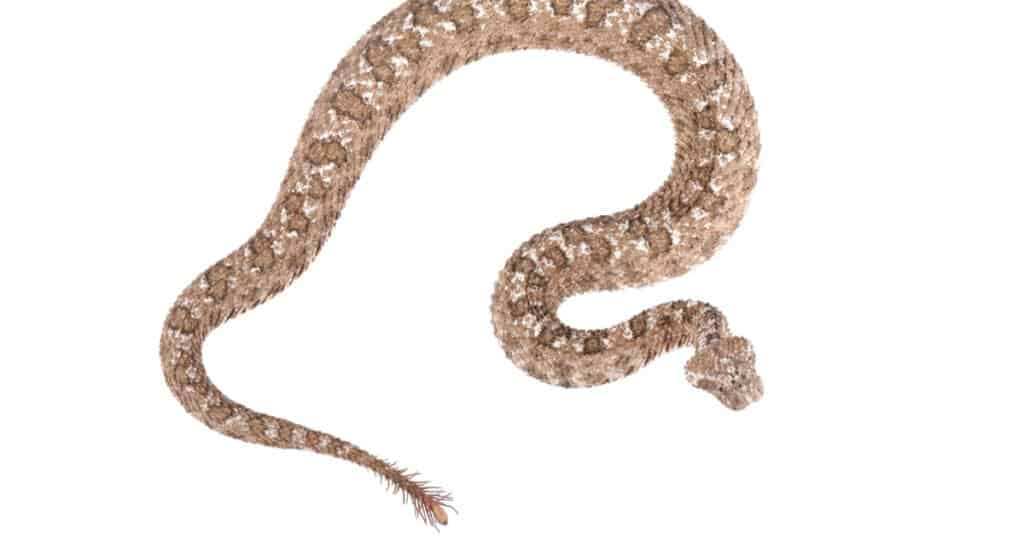The first time you watch this clip, you will think that a snake is being remarkably patient with a spider that is leaping around its tail. You feel that any minute now, the reptile will pounce, and the spider will end up as its next meal! But watch the clip again, and it becomes clear that there is no spider. You are watching the very tip of the snake’s tail, which looks exactly like a spider. This is the aptly named spider-tailed horned viper (Pseudocerastes urarachnoides), and there is a very good reason for them having such a unique tail.
Watch the Incredible Snake Now
Where Do These Snakes Normally Live?
The spider-tailed horned viper can be found in western Iran and in some regions of Iraq. They are most common on the western side of the Zagros Mountains. Sadly, their already small range is getting smaller! When it comes to habitat, they have a preference for gypsum rocks with deep cracks at high elevations. During the day, they bask under bushes.
The species was not officially recognized until 2003. Before that, it was thought to be another species of snake that had a deformity or a parasite on its tail.
Why Do They Have a ‘Spider Tail’?

The spider-tailed horned viper uses its tail as a lure.
©reptiles4all/Shutterstock.com
This superb mimicry is aimed at the snake’s prey. Scientists believe that it is used as a lure to attract birds and have found evidence that these spiders eat larks. Also, these spiders produce a toxin that is especially effective on birds. However, it is also thought to affect mammals and amphibians. There are no recorded envenomations of humans, and so the effect that the venom would have on us is still unknown.
Do Any Other Snakes Use Lures?
Yes, this method of attracting prey is found in other snakes. The scientific name is ‘caudal luring’ and it is a type of aggressive mimicry. For snakes, the end of their tail is the ideal body part to mimic another animal. Not all snakes have tail tips that look like spiders; some look like worms or other invertebrates. The Sahara sand viper’s tail looks like an insect larvae. It buries almost its entire body in the sand with just its eyes and tail tip above the surface. Once an unsuspecting lizard tries to grasp the “larva,” it gets pounced on and eaten. In some snake species, this method is only used by younger snakes, but in others, it is used by adults as well.
The photo featured at the top of this post is © reptiles4all/Shutterstock.com
Discover the "Monster" Snake 5X Bigger than an Anaconda
Every day A-Z Animals sends out some of the most incredible facts in the world from our free newsletter. Want to discover the 10 most beautiful snakes in the world, a "snake island" where you're never more than 3 feet from danger, or a "monster" snake 5X larger than an anaconda? Then sign up right now and you'll start receiving our daily newsletter absolutely free.
Thank you for reading! Have some feedback for us? Contact the AZ Animals editorial team.







